
The Mac mini is, undisputably, one of the best small-form-factor PCs that money can buy. Its cheapest model is within reach of pretty much everyone, and the M2 chips at its heart are some incredibly potent CPU options. But what if you don’t want a Mac? What if you want something that runs Windows, and you don’t want to haul yourself through the process of installing Microsoft’s OS on Apple’s hardware?
There are some great mini PC options out there after a kind of reinvigoration of the format in recent years, and there have been some unexpected companies at the forefront. One of them is Geekom, a relative newcomer to the PC space which makes some very compelling mini PC options. This is the Geekom A7, a mini PC that packs in some very powerful hardware for the price and form factor — It looks like a tiny Mac mini, has loads of storage and RAM, and comes in around the same price as the base model Mac minis. But is it one of the best Mac mini alternatives?
Geekom A7: Price and availability
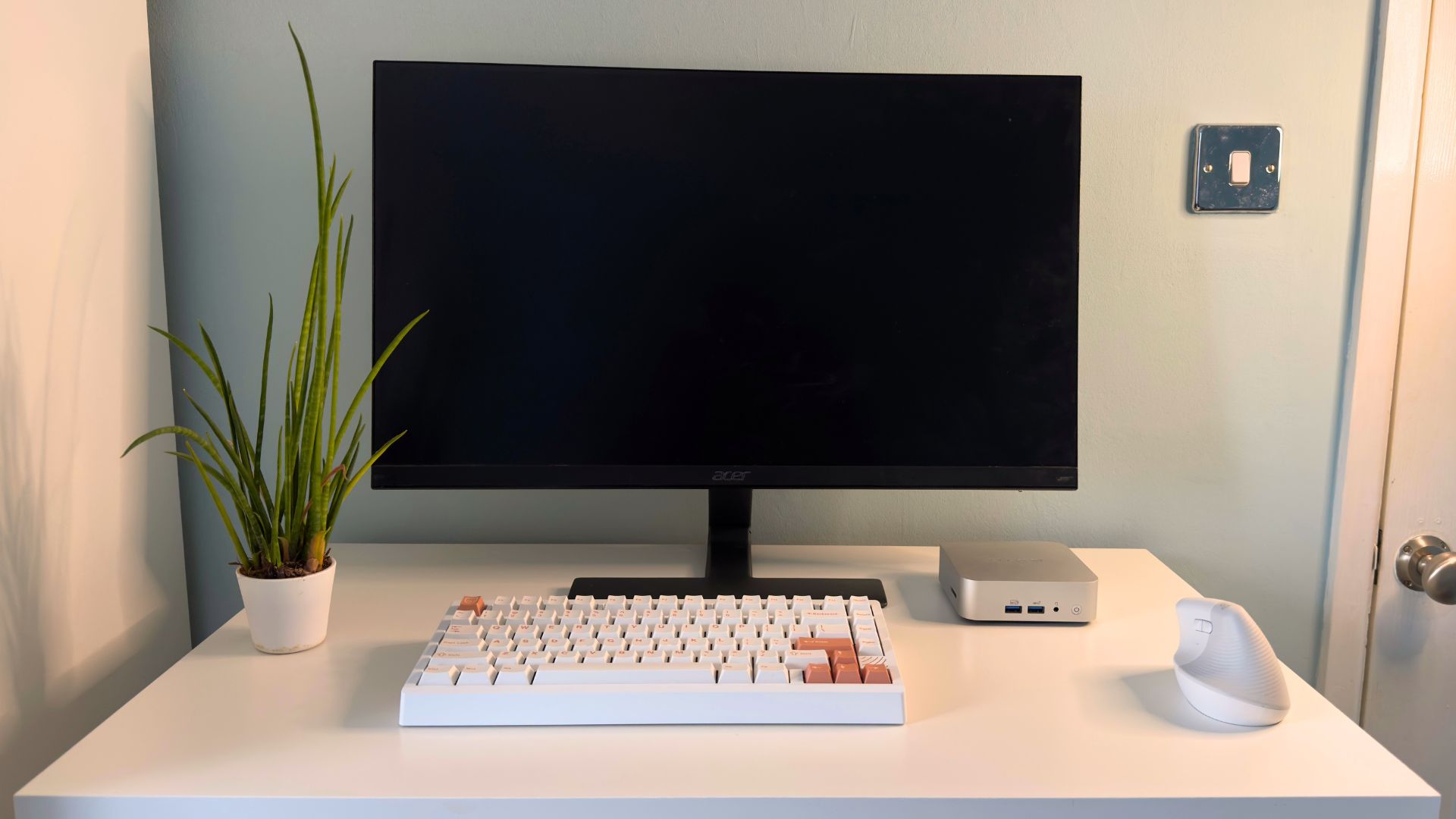
There are two different versions of the Geekom A7. The model we have for review contains an AMD Ryzen R-7940HS, with 32GB of DDR5 RAM, a 2TB SSD, and built-in AMD Radeon 780M graphics. It costs $849 and comes with Windows 11 Pro pre-installed. That’s about the same price as the Mac mini with M2, 8GB RAM, and a 512GB SSD — so at the moment, the Geekom seems like a bit of a bargain.
The second option is $699, only $50 more than the base Mac mini, and it comes with the same 32GB of RAM as the more expensive model but downgrades the processor and the storage. With this option, you get a Ryzen R7-7840HS and 1TB SSD. For the amount of RAM and Storage you get here, that’s a pretty epic price.
Availability is solid. You can find it first and foremost on the Geekom website, but you can also head over to Amazon where you’ll find both options for the same price. Shipping is worldwide as well, so it doesn’t matter where you are in the world.
Geekom A7: Build and looks
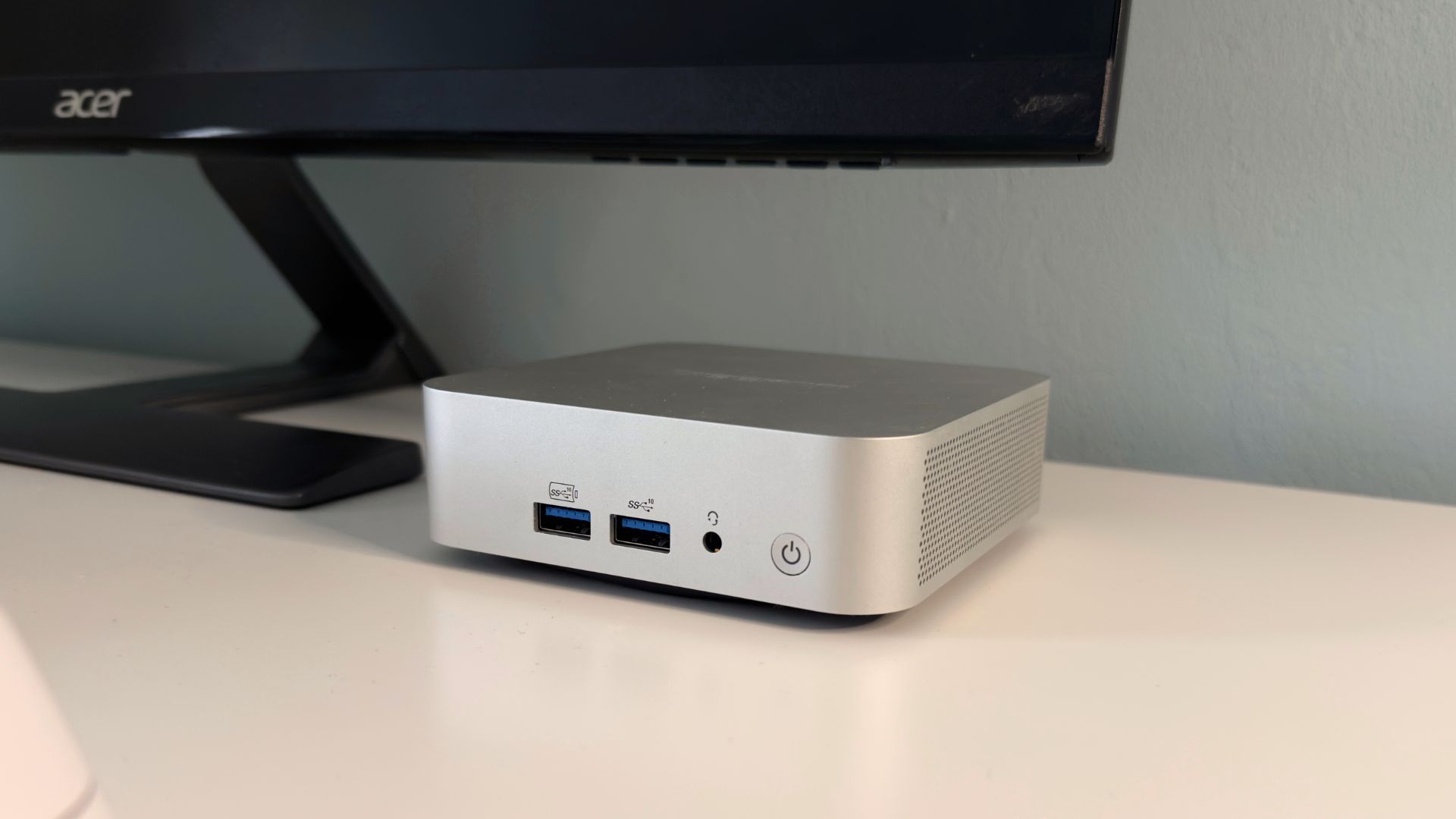
Ok, so the moment I pulled it out of the box, one thing was clear — it’s a tiny Mac mini. It’s got the same cold touch of aluminum as Apple’s premium mini PC, as well as a similar look with its crisp lines and curved corners. It’s a handsome machine, thanks if nothing else to its design proximity to the Apple camp, although you’ll likely not care too much how it looks given how easy it is to hide away on your desk.
It measures only 37mm tall, and 112mm square across the top. That, for reference, is only just bigger than an Apple TV, which itself is a lovely compact oblong unit. It makes putting it somewhere on your desk and forgetting about it super easy, with the option of mounting it to the back of your monitor as a kind of defacto all-in-one PC possible with brackets included in the box.
Build quality is good too, with that aluminum shell doing a lot of the heavy lifting. The ports are all well toleranced, with no need to shove or yank your cables in and out of the machine. The bottom of the PC is made out of a matte black plastic (again, much like the Mac mini), and it makes for a solid and firm base for the computer to sit. You will find, just thanks to the size and weight of the A7, that you’ll have to hold the top of the unit when you’re plugging peripherals in — it does move about while using the USB ports.
Geekom A7: Performance
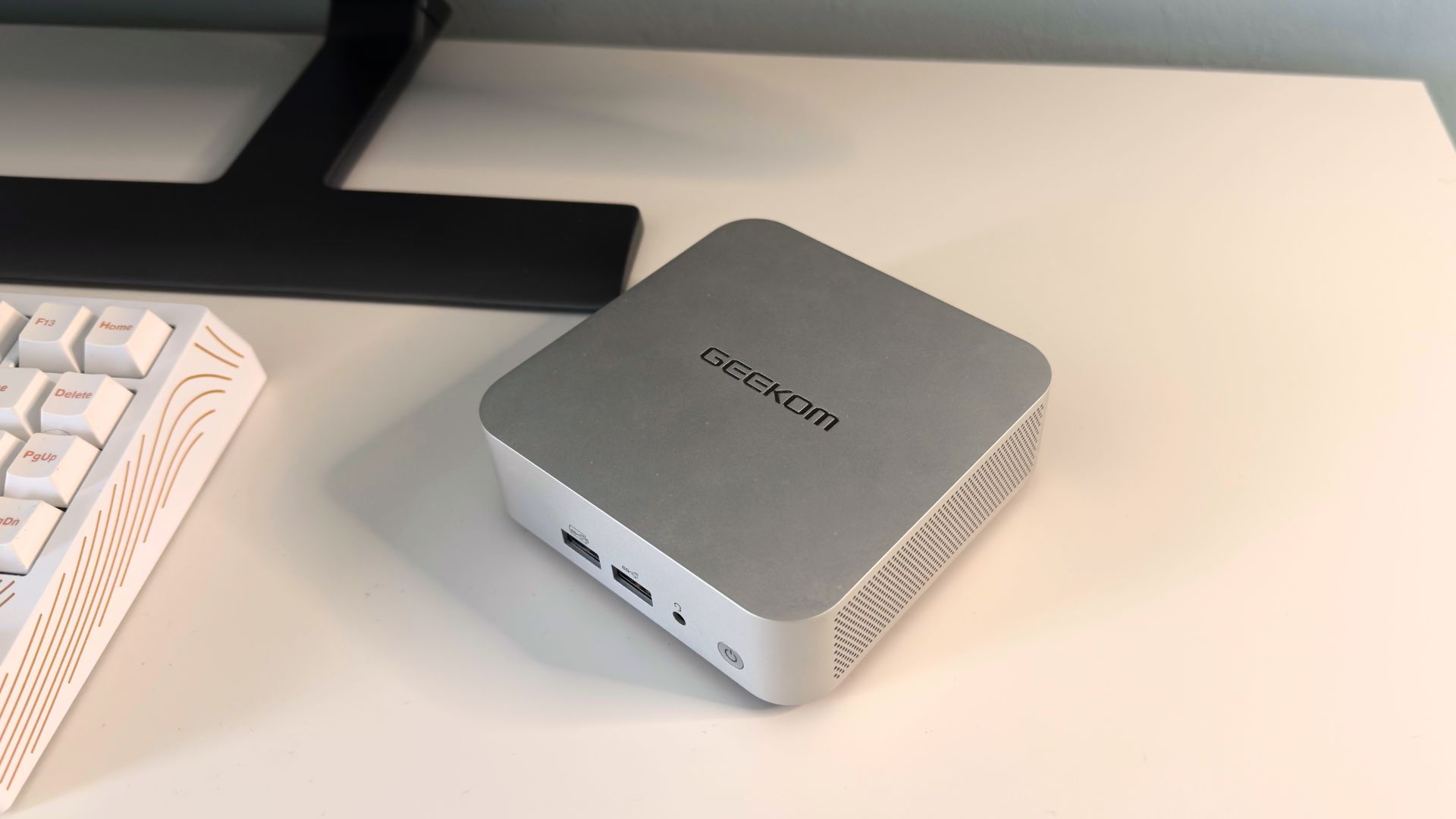
Let’s start with what you can plug in. On the front of the A7 are two USB-A 3.2 Gen 2 ports, and next to the power button there’s a headphone jack. Swing around to the left-hand side of the computer and you’ll find an SD card slot, useful for the photographer in your life. Around the back, there are a few more slots. There’s a pair of USB-C ports, one USB 4 Gen3, and the other 3.2 Gen 2. There’s another pair of USB-A ports, one 3.2 Gen 2 and the other 2.0. There are also two HDMI 2.0 ports, as well as an ethernet port. Without taking up too much space or ruining the look of the PC, there’s not much more room for any more ports. An extra USB-C port on the front would have been nice, but that could well be asking for too much from the PCB inside.
If you buy the 1TB model then you can upgrade later on down the line to a 2TB SSD, but users of the 2TB factory model will find that they can’t upgrade to any more storage than that. The RAM, however, is upgradeable to 64GB, but you’ll have to use laptop-sized DDR5 modules for them to fit. While slightly restricted, the fact that you can upgrade the storage and the RAM is a massive bonus over the Mac mini, which remains sealed and un upgradeable. So those are the stats — but how does the little PC perform in the real world?
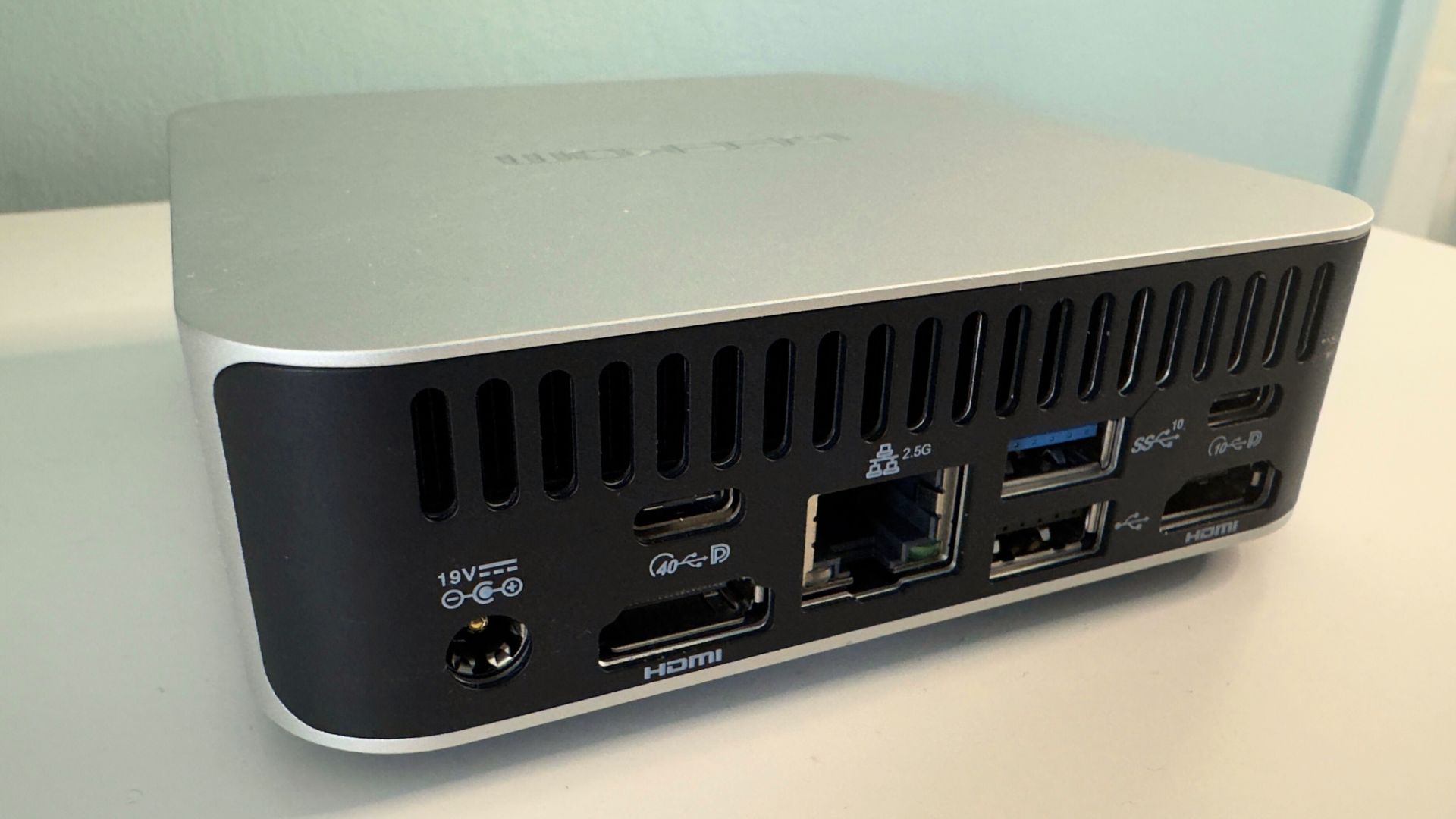
First off, some benchmarks — we’re going to be using the slightly older Unigine Heaven graphics benchmark, Geekbench, Cinebench 2024, and R20, and finally, the 3DMark Time Spy Graphics and CPU benchmark. These will all give us a decent picture of the performance of the machine, and more crucially, Cinebench and Geekbench will allow us to compare it to a Mac mini.
Compared to the M2 Mac mini’s 8761 and 1621 scores respectively, that’s a trouncing from the R9 inside the A7.
Let's start with Uniengine heaven. I ran the benchmark at DX 11, with high quality, normal tesselation, and x2 anti-aliasing. That’s in windowed mode and has a 2560x1440 resolution as well. I got a decent-ish average of 29fps and a final score of 734. That could be better, but considering it’s a built-in GPU rather than a discrete model, it’s reasonable performance.
Secondly, we’ve got Geekbench which will give us a clear picture of the performance of the little computer. We got a single-core CPU score of 2,624, and a multi-core score of 13,385 putting its single-core performance as more impressive than the 1,952 of an M2 Pro Mac mini, only lagging by a couple of thousand points in the multi-core tests. Impressive.
Our Cinebench benchmarks are a great indicator of the rendering performance of the CPU in the A7, giving us an idea of how well the PC is going to perform when you give it some image and video tasks. We can also stack it up against the M2 versions of the Mac mini. First up is Cinebench R23, which will let us test the multicore and single-core rendering performance of the A7. The final multi-core number for the A7 was 14,675 while the single core was 1,806. Compared to the M2 Mac mini’s 8761 and 1621 respectively, that’s a trouncing from the R9 inside the A7. In fact, the numbers we got were closer to those we saw from the M2 Pro Mac mini, only just being pipped to the post by Apple’s $1,499 model — not bad Geekom, not bad.
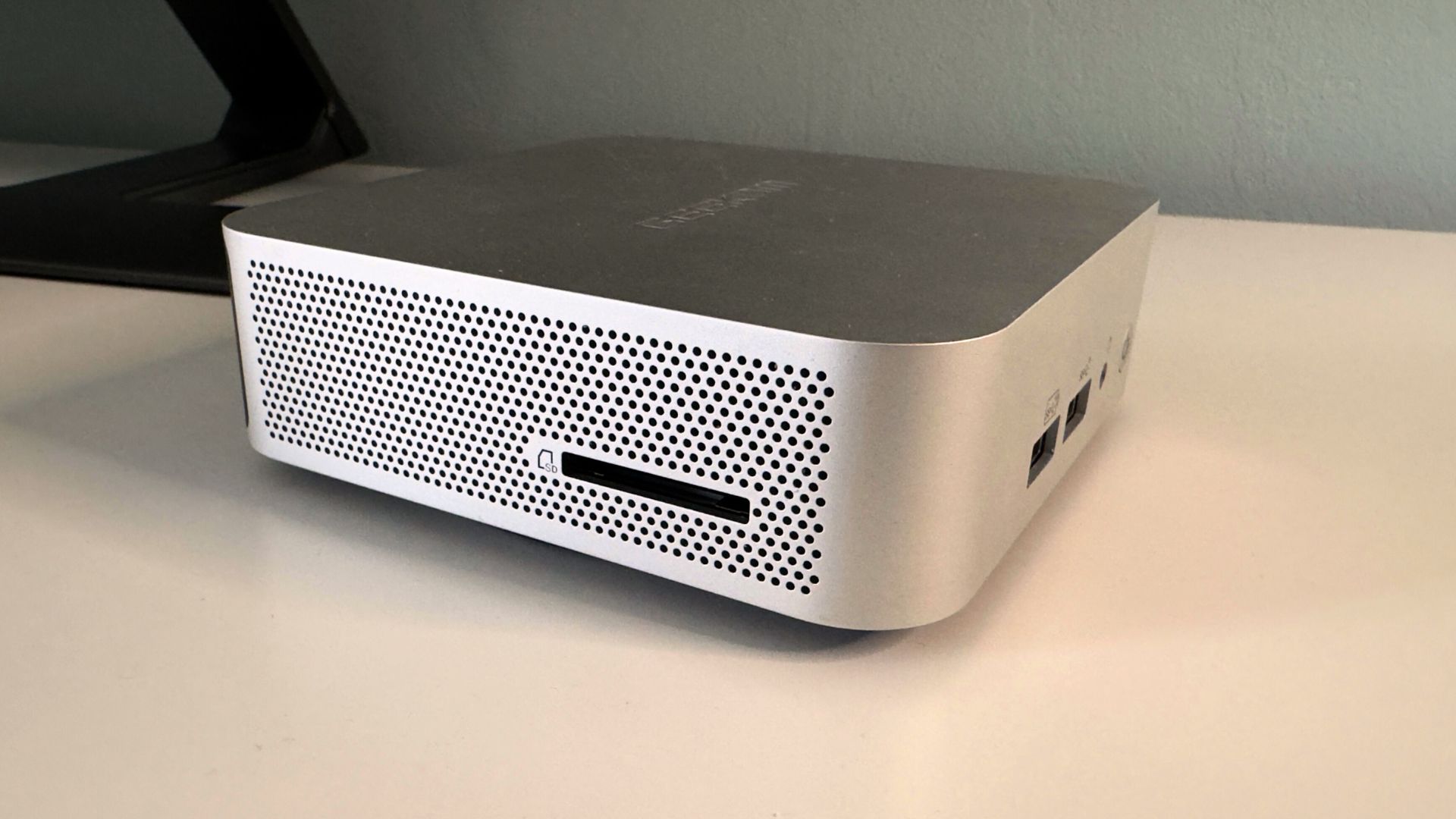
Cinebench 2024 was next, and it pumped out a tasty CPU number for us. That’s 889 multicore for the A7 and 107 single core. In multicore at least, that puts it above the M1 Max chips. The little R9 chip in the A7 really wows in all the CPU benchmarks we can throw at it, impressing particularly in multi-core performance.
3DMark’s Time Spy is the final benchmark, and it will let us test the mobile Radeon 780M graphics chip with modern graphical bits and bobs. After the benchmark ran its course, we got a not-unrespectable 3207 — a graphics score of 2857, and a CPU score of 10542. While it’s going to be solid for rendering tasks and potentially for DAWs and music workstations, it’s not going to be quite as good for games — although with some settings fiddling and mucking about you’ll be able to get some decent frame rates.
Geekom A7: Competition
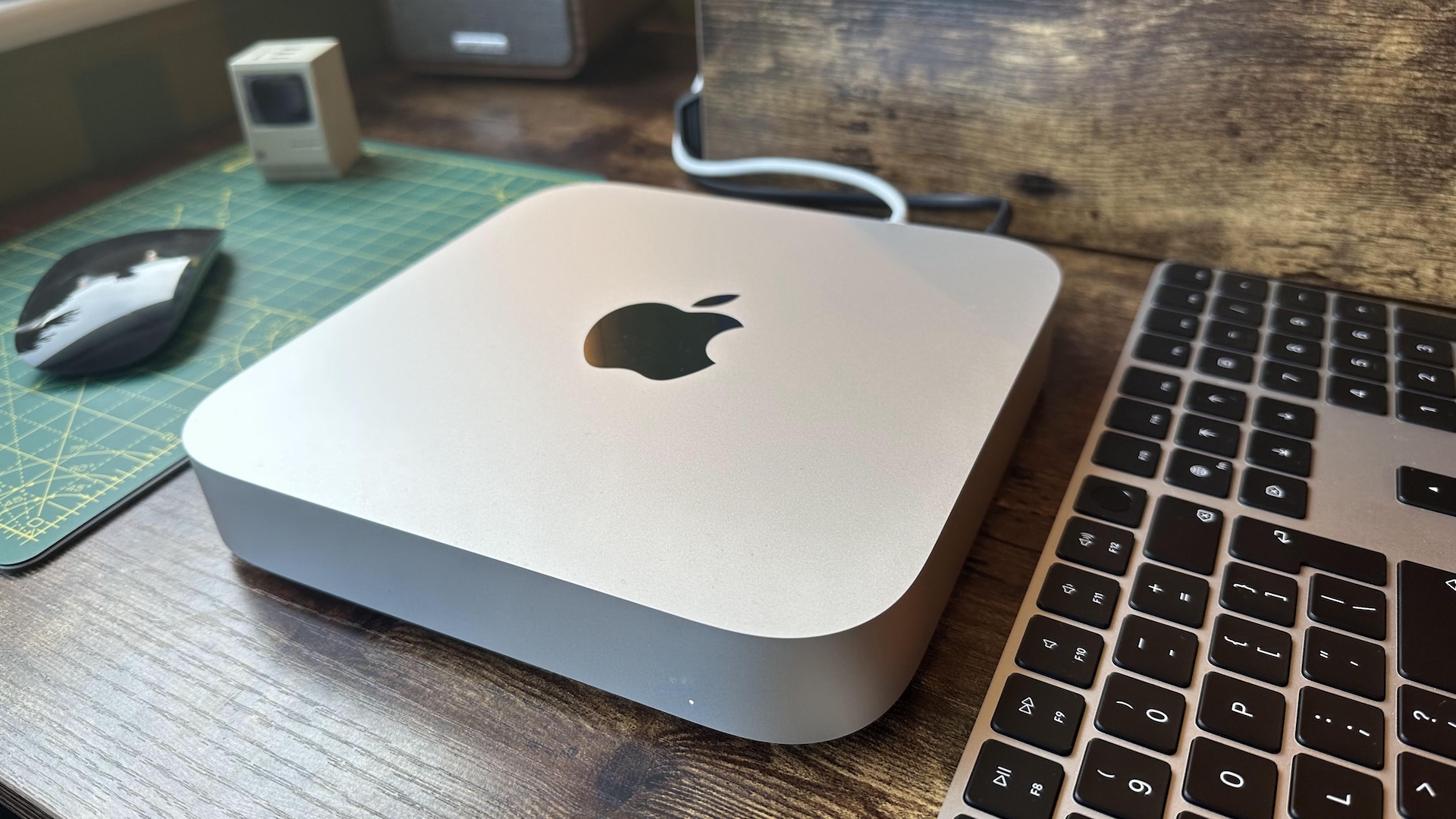
The most obvious competitor is the Mac mini, and this little guy manages to make a very compelling case for itself over Apple's mini PC. It’s powerful, very well-priced, and absolutely tiny. Of course, if you want to stick with macOS (and who could blame you), then the Mac mini is the way to go — but if you’re thinking about giving Windows a go, this could be perfect.
Geekom A7: Should you buy it?
You should buy it if...
- You want a tiny, powerful PC
- You want a small workhorse PC
- You love the look of the Mac mini but want Windows
You shouldn’t buy it if…
- You need macOS
- You want to play loads of games at 4K
Geekom A7: Verdict

The Geekom A7 is a wonderful little computer that might get a little loud under load but provides loads of power from a tiny box. It looks great, works incredibly well, and has a surprising number of ports considering its diminutive stature.
If you want macOS, then you should obviously stick with Apple’s ecosystem. If you’re looking to give Windows a go, however, then the A7 is a spectacular little option. Just don’t expect to play the most recent games with blistering frame rates and you’ll be fine.
The bottom line
The Geekom A7 looks like a mini Mac mini and performs better than PCs that cost a whole lot more. It’s a great option for a mini media PC or even something that needs to run loads of Chrome tabs at one time.







